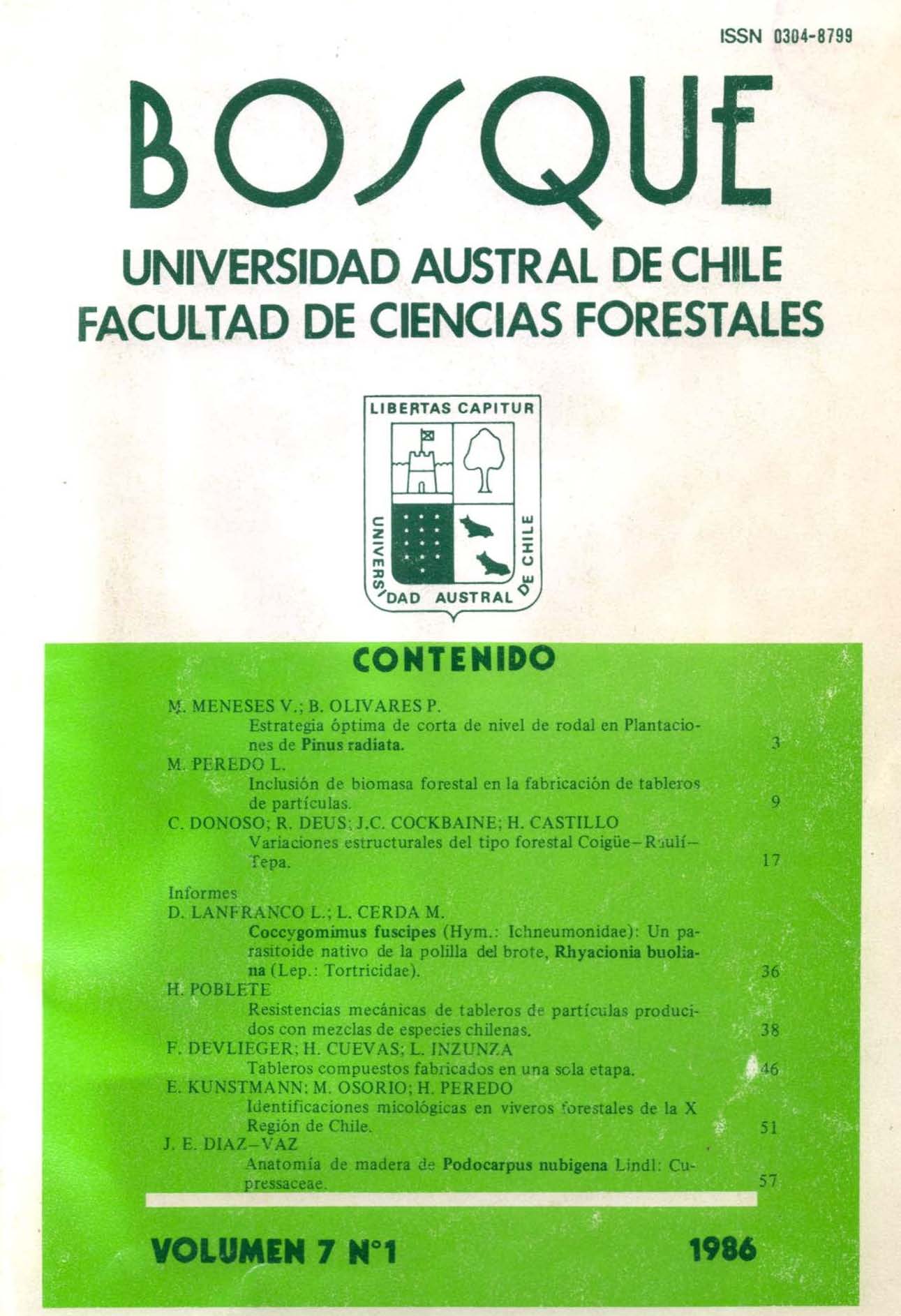Variaciones Estructurales del Tipo Forestal Coigue-Rauli-Tepa
Main Article Content
Abstract
The forest classification of Chile defines a forest type name d Coigüe—Raulí—Tepa, assuming that those three species are the e most characteristic of the type . To corroborate this assumption and to verify variations that occur within the andean range of thee forest type , threee areas through it, a t 38° , 39 ° 30 ' an d 40 ° S latitude were selected. Within these areas, 3 plots in undisturbed forest wer e selected for each combinatio n of altitude — aspect. Two altitude s (600-80 0 an d 800-100 0 m.o.s.l.) a n d four aspects (N, S, E, an d W) were considered. In each plot a general soil analysis an d vegetation analysis wer e performed . Vegetation was stratified according to thre e canopy , sapligs, tre e regeneration and understorey.
It was conclude d tha t Nothofagus dombeyi (Coigüe), Nothofagus alpina (Raulí) a n d Laurelia philippiana (Tepa) are th e characteristics species defining th e forest type , as reflected by their constanc y in all t h e communitie s within th e type . It wa s also demonstrate d tha t some variation in soil characteristics togethe r with climate variation, are reflected in clear vegetation variation over th e range of th e foresty type . This is shown by the numbe r of trees an d basal area pe r hectar e an d th e heights and diameters reached by the trees.
Some species decrease in numbe r toward s t h e south of th e range wherea s some developmen t parameters increase. In othe r species, however, diminution in numbers toward s th e south results in their absence at high altitudes. Special cases are L. philippiana an d Saxegothaea conspicua (Tepa y Mañío). The former increases towards t h e south bot h in numbe r and in developmen t parameters, whereas the latter occurs only at high altitudes in th e southern areas. Aspect effect on vegetation is mor e pronounce d in th e nort h an d th e altitude effect is clearer in the south than in th e nort h of th e range. According to similarity indexes understor y vegetation gradually varies from nort h to south.

